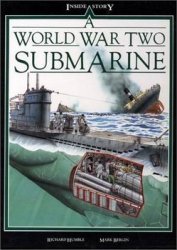From hunting and gathering to agriculture and the passage to a sedentary lifestyle. In-depth studies of the site provide the fullest picture of the Pre-Pottery Neolithic A (PPNA) in the northern Levant.
Salvage excavations were conducted by Maurits N. van Loon in 1965 for the Oriental Institute of the University of Chicago and by Jacques Cauvin from 1971 to 1974 for the Centre National de la Recherche Scientifique. Cauvin found four phases of occupation that incorporate and supercede van Loon’s stratigraphy. The earliest is phase I (8500-8200 BCE), in which the semisedentary occupation of a huntinggathering community was represented in a small excavated area of 35 sq m by a semisubterranean round house, fire pits, and a microlithic tool assemblage, including geometries. This material culture is considered to be Namfian, thus greatly extending its geographic range beyond the southern Levant. In phase II (8200-8000 bce), a transitional period that corresponds to van Loon’s levels I-VIII, semisedentary occupation continued with monocellular round houses, firepits, and a lithics assemblage with Khiamian arrowheads that, although common, first appeared in phase Ib.
Phase III (8000-7600 bce; van Loon’s levels IX-XVII) represents the Mureybetian, or Middle Euphrates, variant of PPNA culture. At that time innovations in architecture and changes in symbolic representation and an expansion of the settlement to an estimated 2-3 hectares (5-7 acres) took place. Multicellular round houses are internally divided by half-height partition walls tlrat formed storage compartments. Late in phase III, van Loon found multicellular rectilinear structures built with distinctive loaf-shaped cut limestone blocks embedded in a matrix of red clay mortar. The structures were subdivided into compartments thought to be too small for human habitation, and the buildings are believed to have functioned as storehouses. Lithics are characterized by Khiamian and Helwan (notched and tanged) arrowheads. The appearance of rectilinear architecture and Helwan points at Mureybet much earlier tlian in the southern Levant may indicate their origin on the Middle Euphrates and later diffusion to the southern Levant. Crude female figurines of clay and stone were found. Several ceramic vessels mark an early abortive attempt at pottery manufacture. Subsistence continued to be largely based on hunting and gathering, but there is evidence of some cereal cultivation. Thus, the changes noted above indicate significant transformations in social organization prior to the emergence of a full agricultural system.
In phase IV (7600-6800 bce) of the PPNB period, the area (28 sq m) excavated included portions of a large rectangular house. Under it were buried several detached skulls, reflecting funerary customs well known in the southern Levant. Lithics are marked by the appearance of Byblos points. Cereals were cultivated and steps were taken toward the practice of animal herding. The occupation of Mureybet from about 8500 to 6800 BCE, during which there were no major cultural breaks, indicates that the trend to sedentism and the emergence of agriculture developed with the same basic population.
[5ee also Euphrates; and Euphrates Dams, Survey of.] BIBLIOGRAPHY
Galley, Sylvie. Technologie du debitage d Mureybet, Syrie: ge-Se millen-aire. British Archaeological Reports, International Series, no. 312.12. Oxford, 1986.
Cauvin, Jacques. “Les fouilles de Mureybet (1971-1974) et leur signification pour les origins de la sedentarisation au Proche-Orient.” Annual of the American Schools of Oriental Research 44 (1979): 19-48. Primary publication of Cauvin’s excavation.
Cauvin, Marie-Claire, and Danielle Stordeur. “Les outillages lithiques et osseux de Mureybet, Syrie (fouilles van Loon 1965).” Cahiers de I’Euphrate 1 (1978): 1-103. See volumes 2-5 for other reports. Nierle, M. C. “Mureybet et Cheikh Hassan (Syrie): Outillage de mou-ture et de broyage (9eme et 86me millenaires).” Cahiers de I’Euphrate 3 (1982): 177-216.
Van Loon, Maurits N. “The Oriental Institute Excavations at Mureybit, Syria: Preliminary Report on the 1965 Campaign. Part i: Architecture and General Finds.” Journal of Near Eastern Studies Tri (1968): 265-290. Primary report of van Loon’s excavation.
Thomas L. McClellan




 World History
World History









